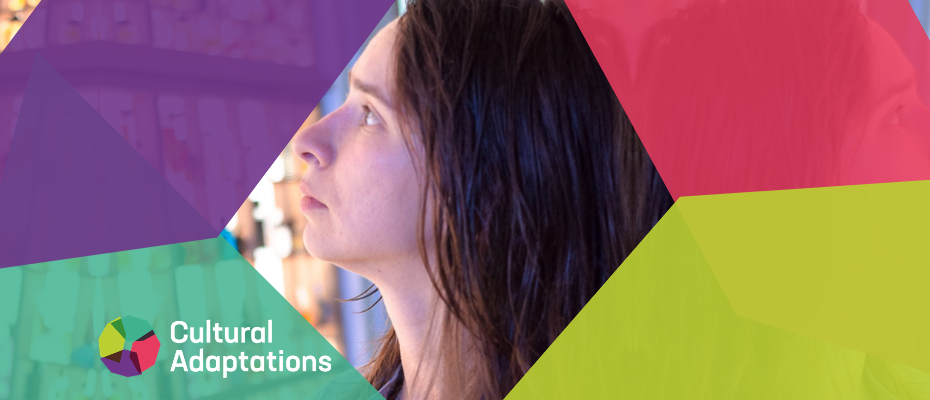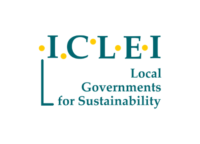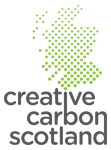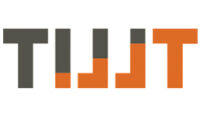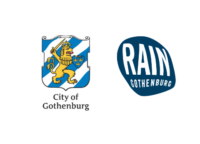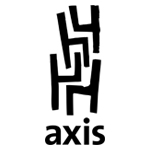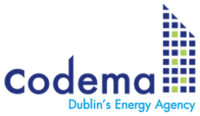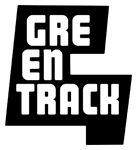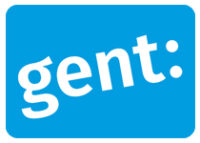As part of their “Art & Transition” theme (2017 – 2021), the Flanders Art Institute (Kunstenpunt) is seeking to stimulate the arts sector to contribute to the transition to a more sustainable society. In this article, Ellen Stynen interviews Anyuta Wiazemsky Snauwaert, the Ghent-based embedded artist of the Cultural Adaptations project.
This article was originally published on Kunsten.be in Flemish Dutch.
What exactly is your role within the project?
The project consists of two parts: first, cultural network organisation Greentrack Ghent investigates the link between climate adaptation and the cultural sector (e.g. What role can Vooruit Arts Centre play during a heat wave? Can De Bijloke Music Centre accommodate people during heavy rainfall?). I participate in the second part, where in every city an artist is “embedded” with an organisation that is working on climate adaptation. I am embedded within the Environment and Climate department in Ghent, with the purpose of investigating how I can influence the department’s working method based on my expertise, background and way of thinking as an artist. Each of the four partner cities organise a two-day “Transnational Workshop” around this theme, and a toolkit will be presented at the final conference in Glasgow in October 2020. (Editor’s note: the conference will now take place in March 2021.)
What does it mean to be embedded?
I’ve attended several meetings at the Environment and Climate department to gain insight into their operation – it is a complex structure with different services. After a few months I made a number of well-defined proposals. One was to participate in an ongoing project at the Paul de Smet de Naeyerpark in the ‘Miljoenenkwartier’ neighbourhood (a historical suburb in the south of the city). This park consists of three green zones, separated by paved intersections that will be depaved (surface coverings softened and made more permeable) and redesigned.
Why are you interested in this specific project?
The fact that the park is in the Miljoenenkwartier makes it special. If you want to depave surfaces in other neighbourhoods, the primary concern is usually the disappearance of parking spaces. But here there are a lot of local residents who are mainly concerned about the historical value of the site. The timing is also good: the project is funded by Flemish subsidies; it is one of the 23 “testing grounds” for depaving in Flanders, and it is expected to be implemented within three years.
I entered at a fairly early phase of the project; I only missed the first information and consultation evening for the neighbourhood, and I want to influence the further planned engagement opportunities. I do not know exactly how yet, but I want to infiltrate the city management and structurally change the way in which these types of projects are usually handled.
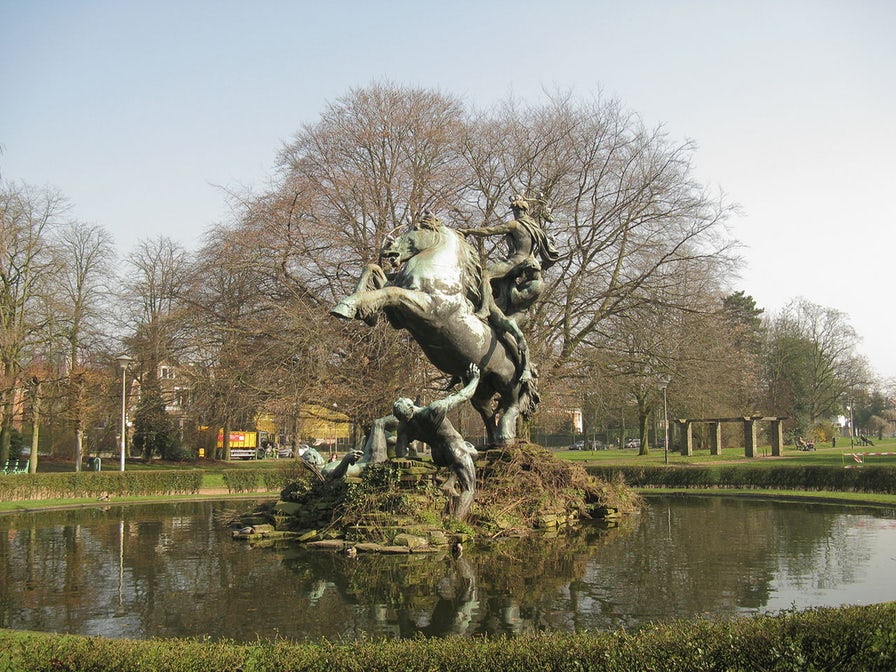
It is not the intention that you, as an embedded artist, create your own artwork. What can your input consist of?
At the moment it is about small but fundamental things. At my insistence, the city changed the project tender document so that the successful urban design firm had to start its work with a meeting with the local residents. The people who live around the park are knowledgeable and this expertise must be taken into account. As a result, the next opportunity for participation with the local community was scheduled earlier than originally planned, and the first site visit will be led by stakeholders from the neighbourhood: people who have an immediate interest in the depaving of the park.
Halfway through the project, what are your initial findings? Can you make more general statements about the operation of the Environment and Climate department as a climate adaptation partner on the basis of this experimental project?
I feel freedom and constraint at the same time. Freedom to participate in an experimental project whose outcome is not certain, but also an ingrained reservation and urge to control.
At an information session of another project, a resident begged for more participation than just input into the colour of the bricks. I thought it was a great perspective to have: that participating in such projects is a gift. But not everyone sees it that way. If I can understand why people think their participation isn’t valuable, then perhaps I can change it.
Climate adaptation is not possible without social cohesion. If you bring people with opposite views together and have them work towards a common goal, you will not only achieve climate resilience, but also greater connectedness. For me, the key is to facilitate meetings between people who would not otherwise meet each other, and that’s why I want to bring contractors and residents together.
I also want to make meetings between the residents and city employees less formal. Despite the goodwill of the latter to build the city of the future together with their fellow citizens, the cooperation is often not optimal, and I think that has a lot to do with communication.
A business coach could also be hired for this. What added value can an artist offer? Where does the challenge lie for you?
I don’t think an artist is better or worse in this context than a coach or a scientist would be. We all start from a different expertise and a different way of thinking. During a meeting with my three fellow embedded artists in Göteborg in November, I noted a number of similarities: even though we do not all work in the same medium and have different experiences, we share the ability to keep developing processes open to change, to bring people together, to make unexpected connections, and to be critical of things that seem obvious at first sight.
I don’t want to label all artists as a single homogeneous group, and you don’t have to be an artist to have these skills, but I often notice the tendency of the city government to define parameters at the beginning of a project. I see it as my task to keep these parameters as open as possible for as long as possible, and to bring imagination into the process.
When I first read the artist open call for this project, I was immediately interested. For me, as a socially committed artist, an embedded artist project is the most direct way to make a difference. The fact that it is a research process makes it fascinating – whether I’m researching the city or an ant’s nest, it’s an object I’m unfamiliar with, and by researching it I discover what I can do with it.
In an ideal world, the technical expertise of the city is combined with the emotional and practical expertise of the residents. The city of the future is not only built by specialists. There is a gap within the city of Ghent: it cannot always activate the imagination needed for this transformation.
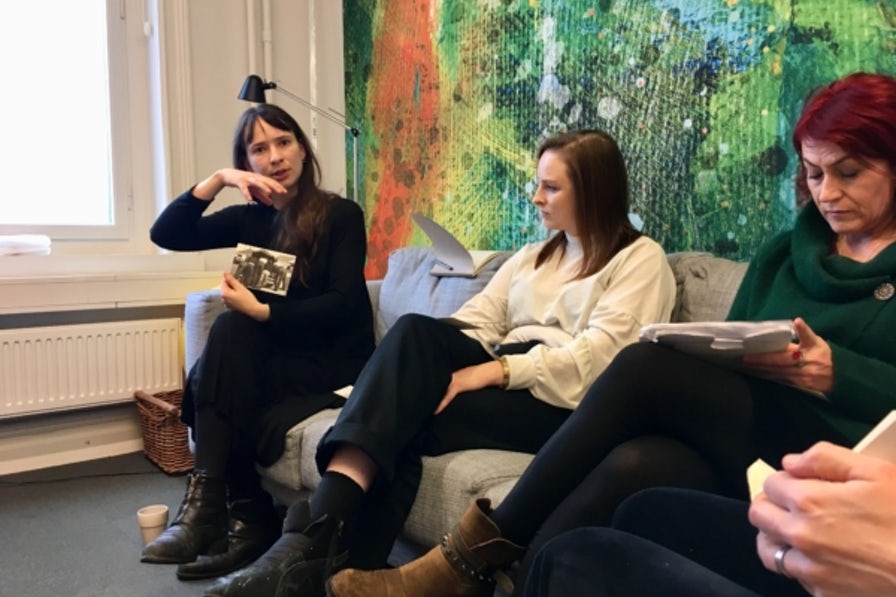
A text that fits in with this and that also inspired you is What do Artists Know by the American artist Frances Whitehead, who, as an embedded artist, also designed the Chicago of the future. In addition to their diverse practices, backgrounds, techniques and theoretical frameworks, artists are also trained in a number of unique skills and methodologies. In What do Artists Know, Whitehead lists some of them. Which are relevant to you?
The first item on the list, about speaking different languages and making connections, is essential:
“Synthesizing various facts, goals, and references – making connections and speaking many ‘languages’. Artists are very “lateral” in their research and operations and have great intellectual and operational agility.”
In an interview with Etcetera, artist Elly Van Eeghem points out that non-expertise is important in her projects in the city. Stepping outside your discipline. Is that at odds with your talent for speaking many languages – you not only studied visual arts but also law and sociology, you have done different jobs in various sectors, you also speak literally three languages?
At the start of the project, I knew hardly anything about climate adaptation. But in having a lack of expertise you can ask more questions: it is an asset. I notice that it helps to speak different languages, and to be able to partially participate in the jargon and scientific logic of the city. I also immerse myself in it: every time I am in a zone that I know nothing about, I learn about it. That is inevitable; I’m not seeking to maintain my ignorance.
What other ways do you recognise artist characteristics within your project?
“Artists do not think outside the box – there is no box.”
Even if there is a history or an existing system, as an artist you always assume that nothing is forever. You can always take it back to a blank canvas and start again. With everything you can ask yourself the question: should it really be that way? Should an information session of the city be so formal? Should the working text be so complex? A good coach can, of course, also point that out, but as a coach you are bound by expectations of a predefined result and you have to produce something practical as an end result. As an embedded artist, I have much more freedom: I contribute to the project based on my personal way of thinking, and I can also work outside the typical comfort zone.
“Creative, in-process problem solving and ongoing processes, not all upfront creativity: responsivity.”
As an artist your work is always a process. This is not just in participatory projects – a painter also works process-wise: you sketch, paint, listen to someone, adjust something or not. You keep working until your painting says it’s finished. The same for a filmmaker or a sculptor: you constantly evaluate from a distance and then dive back into your work. The city, on the other hand, depends on patterns and procedures. As an embedded artist, I am given the space and time to question those procedures.
The Ghent edition of the transnational meeting of Cultural Adaptations will take place on 13 and 14 May 2020. And in October there is the final conference in Glasgow. What do you hope to have achieved by then?
(Editor’s note: Since publication of this article, we have postponed both the Ghent transnational meeting and the Cultural Adaptations workshop until early 2021, due to the COVID-19 pandemic.)
My ambition is to bring about a structural change in the way the city works, so that my input remains tangible even after the Cultural Adaptations project ends. At this stage the process is still developing freely and organically, but I would like to achieve a measurable result. I’m thinking of a toolkit at the moment. I don’t know yet if it will be a text or a presentation, or a series of questions that you can ask yourself before you start on this type of project, or something completely different.
I hope to be able to share insights with regards to communication. I believe that by communicating laterally you can create greater support for climate adaptation. I want to find a way to bring the technical and scientific expertise of the city services together with the daily, pragmatic, emotional and possibly professional expertise of the local residents.
Imagination binds all of this together. The ability to see the bigger picture: what does this project mean for the city? What consequences does it have? How does it contribute to the future? If you can stir up the imagination of the neighbourhood residents, then I am sure they will be more willing to work constructively. But note: I do not encourage people to do hours of free work in their spare time. Extensive participation carries a certain danger. Where is the boundary between involving residents in participatory processes and exploiting them? Can we provide a budget in the future to use their expertise? It is a difficult but also an interesting balancing act.
Cultural Adaptations is a learning process. It would be fantastic if it had a follow-up after 2020, and if the idea of an embedded artist could also be integrated into other services. At the transnational meeting in Gothenburg, I met TILLT, an organisation that has been building a bridge between the government, the business world and artists for years. TILLT believes in the power of a creative society, in which art – through embedded artists – contributes to human growth. Who knows, a similar organisation could be established here in Ghent.
Finally: do you think that in the light of the climate crisis, will art have to ‘re-imagine’ itself? Do we need a ‘tabula rasa’, as some artists and thinkers are now suggesting, like we did after the Second World War?
I have a deontological problem with that statement. As an embedded artist, I am now at the service of society and I work from an ‘instrumental’ position. But that is my own choice, I don’t do that because someone expects it from me. I don’t think we have the right to expect anything from art. There must also be space for art without a social purpose, such as art as a place of refuge, where you can escape from all problems.
The social commitment of the artist can be an example of what the art of the future can look like. Artists are actively looking for a new language and new forms. This search is initiated by our arts and culture themselves, not as a result of the climate crisis, the dramatically changing political situation or the demands of society. I am curious about what these new forms will be, and I think artists such as John Baldessari, Tehching Hsieh, Rirkrit Tiravanija will have a major influence on it. Another trend I notice is the rise of activist art and art activism, think of Maria Lucia Cruz Correia or Katrin Nenasheva. But that is a conversation for another day.
Anyuta Wiazemsky Snauwaert (1989, Russia) is a Russian-Belgian artist. She graduated from the Law Faculty in Moscow before deciding to start an artistic career. She studied Fine Arts at the KASK, School of Arts in Ghent. Her works were shown in Moscow, Ghent, Leuven, Kortrijk, Brussels, Rotterdam and in Hyderabad. She makes visual work, photographs and performs.
Greentrack Ghent is an umbrella network that is committed to reducing the ecological footprint of the cultural sector. Together with the City of Ghent’s Environment and Climate department, they are a partner organisation in the Cultural Adaptations project.
For more information about transition in the arts and the work of the Flanders Arts Institute, contact Nikol Wellens.
Find out more about our embedded artists
